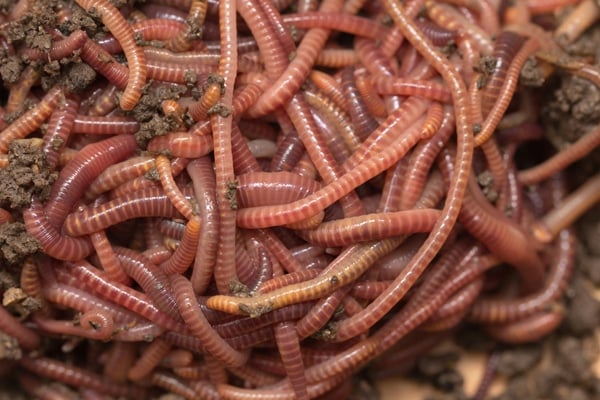Trust Red Wiggler Express for Reliable and High-Quality Lawn Care Options
Open the Secrets of Red Wigglers: Your Guide to Composting Success
The combination of red wigglers right into composting techniques provides a significant opportunity for enhancing dirt wellness and advertising sustainability. Recognizing their needs and actions is critical for optimizing their possibility, from setting up a suitable worm container to feeding them the right materials.

What Are Red Wigglers?
(Lake Rhodhiss Bait)Red wigglers, clinically called Eisenia fetida, are a types of earthworm largely utilized in composting because of their exceptional capability to decompose organic matter efficiently. These worms are defined by their reddish-brown coloration and a segmented body, usually measuring in between 3 to 4 inches in length. Unlike various other earthworm species, red wigglers flourish in abundant, natural atmospheres, making them excellent for vermicomposting systems.
Indigenous to The United States And copyright, they are often found in decomposing fallen leaves and garden compost heaps, where they play a vital duty in nutrient recycling. Their adaptation to living in a moist, aerobic atmosphere allows them to consume huge quantities of natural waste, breaking it down into nutrient-rich spreadings that enhance soil wellness.
Red wigglers replicate swiftly, with a single worm with the ability of producing a number of cocoons each week, each including several hatchlings. This rapid reproduction rate adds to their efficiency in composting operations. They prefer temperatures between 60 ° F and 80 ° F, and their activity level raises substantially within this variety, further aiding in the disintegration process. Comprehending the biology and actions of red wigglers is important for optimizing their possibility in composting applications.
Advantages of Utilizing Red Wigglers
Taking advantage of the power of red wigglers in composting provides various advantages that improve soil wellness and promote lasting waste management. These exceptional organisms efficiently break down raw material, transforming cooking area scraps and lawn waste into nutrient-rich vermicompost. This completed item is exceptionally useful for plant development, as it boosts soil framework, raises dampness retention, and enhances vitamins and mineral schedule.

(Lake Rhodhiss Bait)In addition, the existence of red wigglers in your composting system can increase the composting process, generating premium garden compost in a fraction of the moment compared to traditional approaches. The spreadings generated by these worms are likewise including valuable microorganisms that better enrich the soil community.
Establishing Your Worm Container
Producing an effective worm bin is an uncomplicated procedure that can dramatically enhance your composting efforts. Worm containers can be made from plastic storage space containers, wooden boxes, or readily available worm containers.
Following, prepare the bed linens material, which offers as the worms' environment. A mix of shredded paper, cardboard, and coconut coir functions well, giving a comfy setting for the worms. Goal for a bed linen deepness of about 4-6 inches. Dampen the bedding lightly, ensuring it appears like a moist sponge without excess water merging at the bottom.

Feeding Your Red Wigglers
To make certain the health and efficiency of your red wigglers, it is important to offer them with a well balanced diet that satisfies their dietary needs. Red wigglers thrive on a diverse selection of organic products, which not only supply essential nutrients but likewise advertise effective composting.
Beginning by integrating cooking area scraps such as veggie peels, fruit cores, and coffee premises. Avoid citrus fruits, onions, and garlic, as these can be damaging to worm wellness. In addition, introduce shredded paper, cardboard, and completely dry fallen leaves to develop a well-aerated atmosphere.
Feeding regularity a fantastic read should be checked; generally, worms can eat half their body weight in food weekly. It is crucial to prevent overfeeding, as excess food can bring about unpleasant odors and attract pests. A great practice is to include food in tiny amounts, permitting worms to process it prior to introducing much more.
Preserving dampness degrees is also vital; the bed linen should perspire but not soaked. Finally, be certain to on a regular basis examine the temperature and pH levels of the bin to make sure an optimal atmosphere for your red wigglers, ultimately improving their composting performance.
Harvesting and Using Garden Compost
An effective composting process with red wigglers culminates in the rich, dark garden compost understood as vermicompost, which can considerably improve dirt wellness and plant development. Gathering this nutrient-dense material commonly happens every three to 6 months, relying on the dimension of your system and the amount of organic matter being processed.
To gather, gently separate the compost from the worms and any undecomposed products. One effective approach involves moving the materials of the bin away and including fresh bedding and food to the empty room, motivating the worms to move. After a couple of days, the compost can be collected from the contrary side.
It is necessary to use vermicompost appropriately to optimize its benefits. It can be utilized as a top dressing for yard beds, mixed into potting soil, or brewed into a nutrient-rich fluid plant food called "worm tea." This application approach assists to supply vital nutrients directly to plant origins, advertising much healthier development. By including vermicompost right into your gardening program, you not just reuse natural waste but also produce a thriving environment that supports lasting horticulture practices.
Verdict
In summary, red wigglers offer as remarkable allies in composting efforts, changing organic waste into nutrient-rich vermicompost (Red Wiggler Express). Their distinct biological features and efficient waste handling capabilities contribute dramatically to lasting horticulture techniques. By understanding the optimal problems for their environment, feeding requirements, and compost harvesting techniques, gardeners can improve dirt health and advertise plant vitality. Accepting vermicomposting not only reduces land fill waste yet likewise promotes a more environmentally liable technique to horticulture and source management.